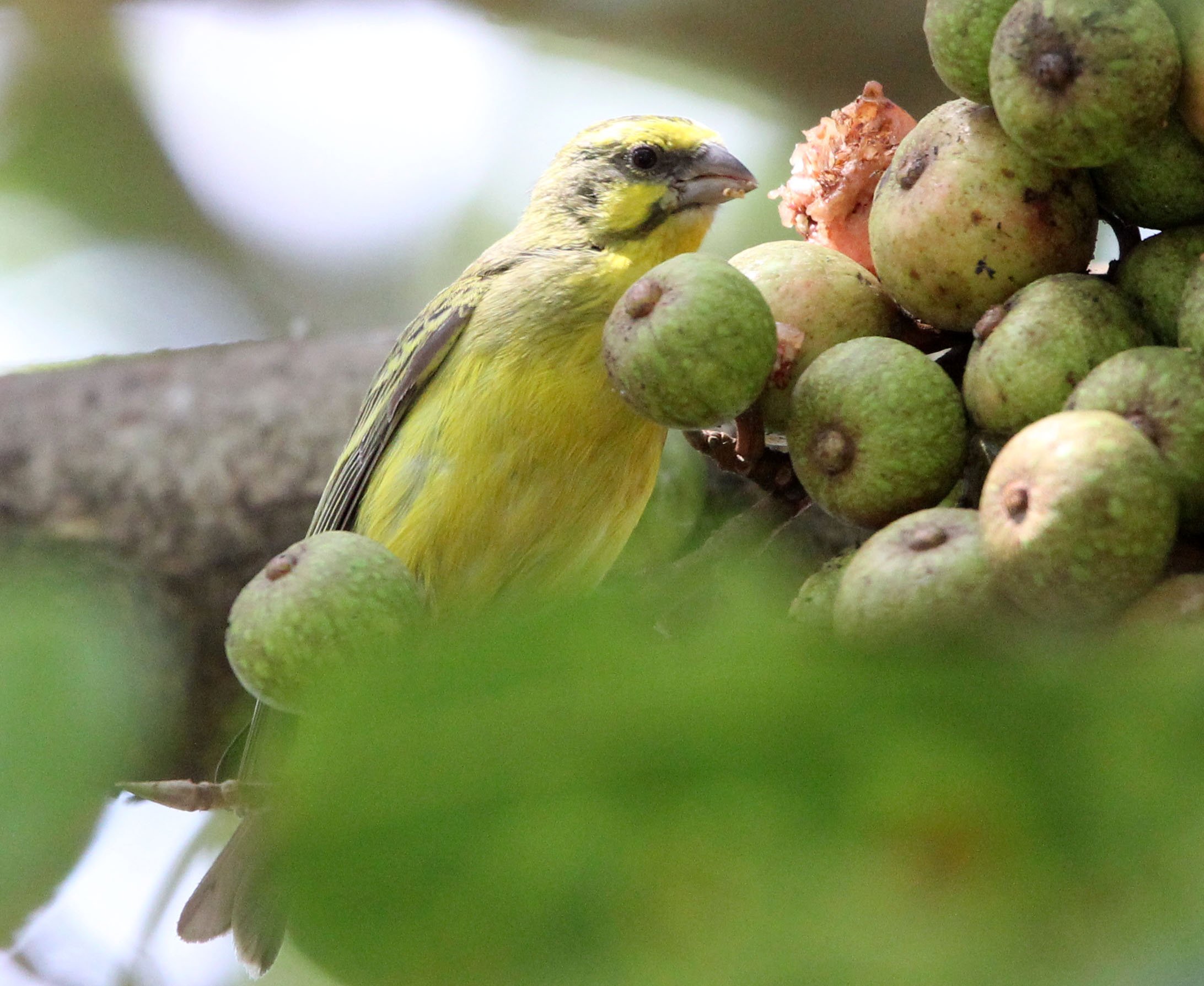Family Fringillidae - True Finches
The true finches are small to medium-sized passerine birds in the family Fringillidae. Finches generally have stout conical bills adapted for eating seeds and nuts and often have colourful plumage. They occupy a great range of habitats where they are usually resident and do not migrate. They have a worldwide native distribution except for Australia and the polar regions. The family Fringillidae contains more than two hundred species divided into fifty genera. It includes the canaries, siskins, redpolls, serins, grosbeaks and euphonias, as well as the morphologically divergent Hawaiian honeycreepers.
Many birds in other families are also commonly called "finches". These groups include the estrildid finches (Estrildidae) of the Old World tropics and Australia; some members of the Old World bunting family (Emberizidae) and the New World sparrow family (Passerellidae); and the Darwin's finches of the Galapagos islands, now considered members of the tanager family (Thraupidae).
The finches have a near-global distribution, being found across the Americas, Eurasia and Africa, as well as some island groups such as the Hawaiian islands. They are absent from Australasia, Antarctica, the Southern Pacific and the islands of the Indian Ocean, although some European species have been widely introduced in Australia and New Zealand. Finches are typically inhabitants of well-wooded areas, but some can be found on mountains or even in deserts.
The below images are links to galleries with images of the various Fringillids I have photographed over the years.
House Finch (Haemorhous mexicanus) Western USA
Chestnut-bellied Euphonia (Euphonia pectoralis) Brazil
Thick-billed Euphonia (Euphonia laniirostris) Mindo, Ecuador - Chocoan Lowlands and Valley
Purple-throated Euphonia (Euphonia chlorotica) Espirito Santo, Santa Teresa, Pousada Vita Verde
Violaceous Euphonia (Euphonia violacea) Espirito Santo, Santa Teresa, Pousada Vita Verde
Red or Common Cossbill (Loxia curvirostra) Lake Farm, Olympic Peninsula Washington
Orange-bellied Euphonia (Euphonia xanthogaster) Bellavista Cloud Forest Lodge, Ecuador
Hawfinch (Coccothraustes coccothraustes) Yoroushi Onsen, Daiichi Spa, Hokkaido, Japan
Mongolian Finch (Bucanetes mongolicus) Ku Hai Laike, Qinghai China
Streaky Seedeater (Crithagra striolata) Rwanda
Yellow-fronted Canary (Crithagra mozambica) South Africa
Yellow Canary (Crithagra flaviventris) West Coast NP, South Africa
Lemon-breasted Canary (Crithagra citrinipectus) Saint Lucia Wetlands Reserve, South Africa
Common Rosefinch (Carpodacus erythrinus) Doi Ang Kang, Chiang Mai Thailand
Gray-crowned Rosy-Finch (Leucosticte tephrocotis) Commander Islands Russia
Plain Mountain Finch (Leucosticte nemoricola) Qinghai Lake, China
Spot-winged Grosbeak (Mycerobas melanozanthos) Chiang Mai
Eurasian Bullfinch (Pyrrhula pyrrhula) Kussharo Lake, Hokkaido Japan
Grey-headed Bullfinch (Pyrrhula erythaca) Foping Nature Reserve, Shaanxi China
Ethiopian or Abyssinian Siskin (Serinus nigriceps) Bale & Simien Mountains Ethiopia
Yellow-crowned Canary (Serinus flavivertex) Ruhengeri, Rwanda
Cape Canary (Serinus canicollis) Cape Town South Africa
Citril Finch (Carduelis citrinella) Stelvio National Park, Italy
European Goldfinch (Carduelis carduelis) Soria & Andujar Spain
Desert Finch (Rhodospiza obsoleta) with Spanish Desert Sparrow - Jebil NP, Tunisia
Japanese Grosbeak (Eophona personata) Shiobutsu Onsen, Karuizawa Japan
Chinese Grosbeak (Eophona migratoria) Nankou Rudong China
Grey-capped or Oriental Greenfinch (Chloris sinica) Shiobutsu Onsen, Karuisawa Japan & Poyang Lake, China
Greenfinch (Chloris chloris vanmarii) Sierra de Andujar, Spain
Greenfinch (Chloris chloris aurantiiventris) Vercors NP, France
Greenfinch (Chloris chloris voousi) Feija National Park, Tunisia
Brambling (Fringilla montifringilla) Poyang Lake, Jiangxi Province, China
Chaffinch (Fringilla coelebs) Bouhedma NP, Tunisia
Akikiki or Kauai Creeper (Oreomystis bairdi) Kauai Hawaii
Iiwi (Vestiaria coccinea) Derpanidae Honeycreepers - Hawaii
Tibetan Serin or Siskin (Spinus thibetanus) Wuliangshan Nature Reserve, Yunnan China
Pine Siskin (Spinus pinus) Elwha Valley, Whiskey Bend Trail
Eurasian Siskin (Spinus spinus) China
Lesser Goldfinch (Spinus psaltria) Catavina Desert, Baja Mexico
American Goldfinch (Spinus tristis) Ash Canyon, Arizona








































